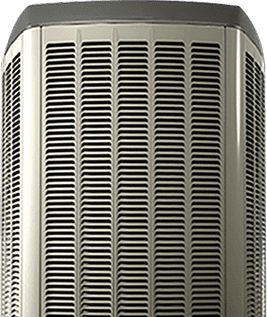Choosing the Right Furnace: The First Steps

Choosing the Right Furnace: The First Steps
Which type & size of furnace is right for you?
There are many important choices to checklist when you’re upgrading your home heating system.
But today we’re just going to cover the first two you should consider:
- The fuel type used to power your furnace
- The size of your furnace & your home
Why is this an ideal starting point for a new furnace?
Deciding on fuel type & determining system size before you start to budget and plan will help you avoid headaches and wasted time & money on furnace installation.
Having these factors determined beforehand means you’ll have a much better idea of which furnace will best meet you needs for:
- Energy cost savings
- System efficiency
- Fast & easy installation
- Longer lasting furnace
- Convenience & cost-effectiveness
Take a look at your options below and get started on finding the best new home heating system for you.
Different types of furnaces.
Gas-powered furnaces: The most common furnaces in North America. Gas is used to ignite the burner, heating the air inside the furnace before it is blown out through the duct system to heat your home.
Oil-powered furnaces: These systems operate the same way as gas furnaces, but – as you may have guessed – rely on oil instead of gas for fuel. This option is most often found in colder regions or in homes that can’t be connected to a gas line.
Electrical furnaces: These furnaces use heating elements inside the unit to heat the air before blowing it through the duct system. Electrical furnaces are often more expensive up front, but they can also be some of the most fuel-efficient available and save you money in the long run.
Modulating furnaces: These types of heating systems are consistently running to provide precise temperature settings. They operate at a high-efficiency rate but typically cost more initially.
Furnace sizes, how they’re measured, and why they matter.
There are several factors to take into account for measuring a furnace:
- The size of your home
- The amount of heat your furnace produces (in BTUs)
- How efficient the furnace is
Furnaces measure heating capacity in BTUs (British thermal units).
A BTU is the amount of heat required to raise the temperature of one pound of water by one degree Fahrenheit.
The average furnace typically produces between 80,000 and 100,000 BTUs an hour.
The next factor to consider is the efficiency of the furnace.
Every furnace is rated with an Annual Fuel Utilization Efficiency (AFUE) rating.
All gas-powered furnaces in Canada are required to have a minimum rating of 90% AFUE, but more efficient furnaces can reach up to 97% efficiency.
The total amount of BTUs produced by your furnace is calculated by comparing the efficiency rating to the heating capacity.
For example, if you have a furnace that has the capacity to produce 100,000 BTUs of heat an hour, but the furnace only has an 85% AFUE rate, the actual amount of heat the furnace is producing is only 85,000 BTUs.
The higher the AFUE rating, the more efficient your furnace is at producing heat.
Step 2: Sizing your furnace for your home.
Sizing a furnace for your home is essential, and can be the most complicated step in the process.
The size of your home can have a huge impact on your furnace’s overall performance, such as how well it maintains heat.
Your home’s age, orientation, windows, and insulation also all play a part in the furnace’s operation.
Because of how complicated this is, HVAC professionals have devised an equation called the Manual J Load calculation to find the optimal size of furnace you need for your home.
Start your search for new furnace with Francis Heating & Air.
A new furnace is a big investment.
The pros at Francis can help you break it into more manageable chunks, starting with size & fuel, so you can feel confident in making the right decision for your needs, budget and home comfort.
